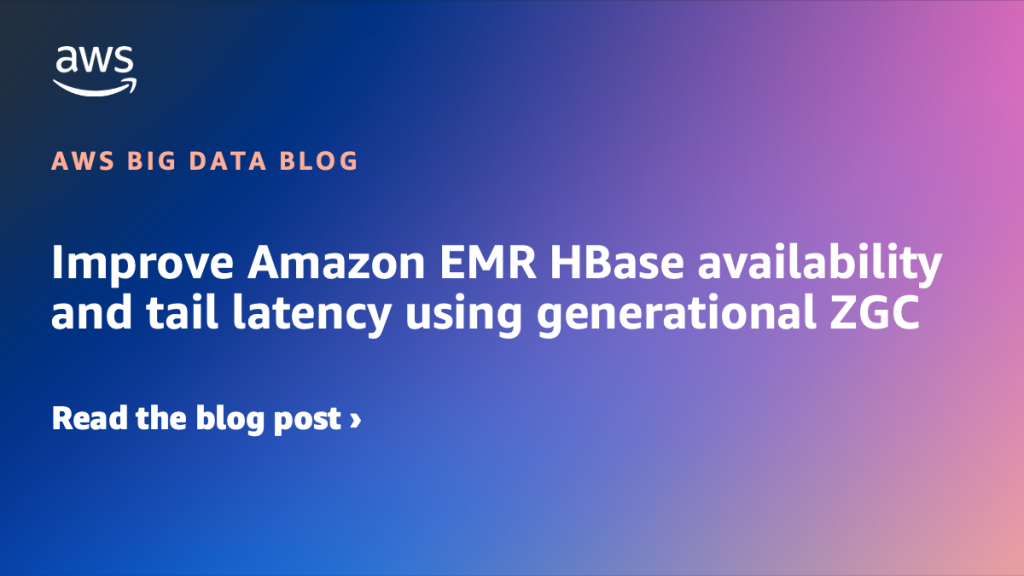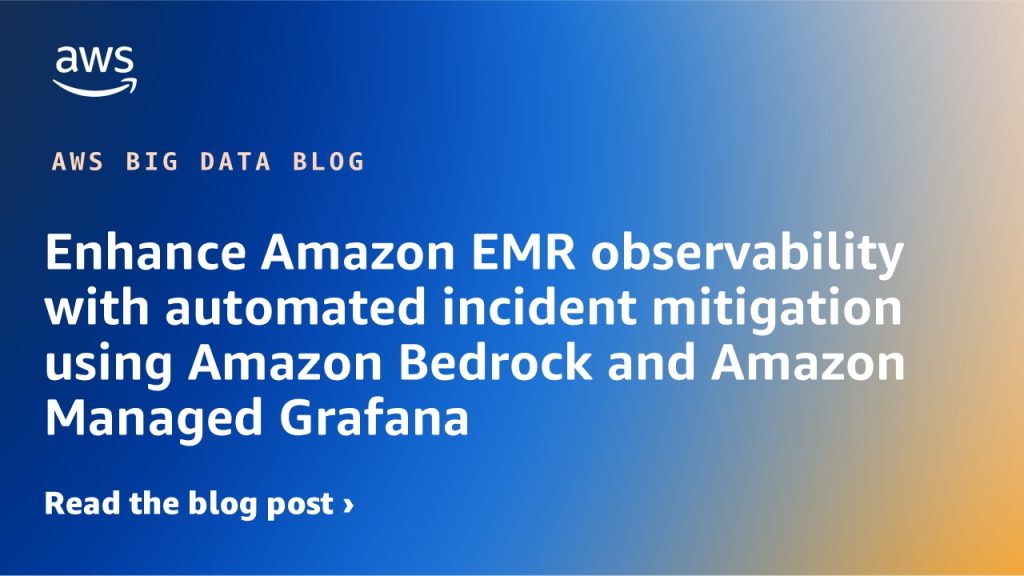AWS Big Data Blog
Category: AWS Big Data
The Amazon SageMaker Lakehouse Architecture now supports Tag-Based Access Control for federated catalogs
We are now announcing support for Lake Formation tag-based access control (LF-TBAC) to federated catalogs of S3 Tables, Redshift data warehouses, and federated data sources such as Amazon DynamoDB, MySQL, PostgreSQL, SQL Server, Oracle, Amazon DocumentDB, Google BigQuery, and Snowflake. In this post, we illustrate how to manage S3 Tables and Redshift tables in the lakehouse using a single fine-grained access control mechanism of LF-TBAC. We also show how to access these lakehouse tables using your choice of analytics services, such as Athena, Redshift, and Apache Spark in Amazon EMR Serverless.
Improve Amazon EMR HBase availability and tail latency using generational ZGC
Large-scale HBase deployments on Amazon EMR suffer from unpredictable garbage collection behavior that creates performance bottlenecks for business-critical applications. To solve this problem, Amazon EMR leverages Oracle’s generational ZGC technology from JDK 21 to deliver predictable, sub-millisecond pause times. This post shows you how to configure generational ZGC in Amazon EMR 7.10.0, apply performance tuning methods, and optimize HBase RegionServer garbage collection settings.
Enhance Amazon EMR observability with automated incident mitigation using Amazon Bedrock and Amazon Managed Grafana
In this post, we demonstrate how to integrate real-time monitoring with AI-powered remediation suggestions, combining Amazon Managed Grafana for visualization, Amazon Bedrock for intelligent response recommendations, and AWS Systems Manager for automated remediation actions on Amazon Web Services (AWS).
Stream data from Amazon MSK to Apache Iceberg tables in Amazon S3 and Amazon S3 Tables using Amazon Data Firehose
In this post, we walk through two solutions that demonstrate how to stream data from your Amazon MSK provisioned cluster to Iceberg-based data lakes in Amazon S3 using Amazon Data Firehose.
Build a secure serverless streaming pipeline with Amazon MSK Serverless, Amazon EMR Serverless and IAM
The post demonstrates a comprehensive, end-to-end solution for processing data from MSK Serverless using an EMR Serverless Spark Streaming job, secured with IAM authentication. Additionally, it demonstrates how to query the processed data using Amazon Athena, providing a seamless and integrated workflow for data processing and analysis. This solution enables near real-time querying of the latest data processed from MSK Serverless and EMR Serverless using Athena, providing instant insights and analytics.
Accelerate lightweight analytics using PyIceberg with AWS Lambda and an AWS Glue Iceberg REST endpoint
In this post, we demonstrate how PyIceberg, integrated with the AWS Glue Data Catalog and AWS Lambda, provides a lightweight approach to harness Iceberg’s powerful features through intuitive Python interfaces. We show how this integration enables teams to start working with Iceberg tables with minimal setup and infrastructure dependencies.
Build end-to-end Apache Spark pipelines with Amazon MWAA, Batch Processing Gateway, and Amazon EMR on EKS clusters
This post shows how to enhance the multi-cluster solution by integrating Amazon Managed Workflows for Apache Airflow (Amazon MWAA) with BPG. By using Amazon MWAA, we add job scheduling and orchestration capabilities, enabling you to build a comprehensive end-to-end Spark-based data processing pipeline.
Best practices for least privilege configuration in Amazon MWAA
In this post, we explore how to apply the principle of least privilege to your Amazon MWAA environment by tightening network security using security groups, network access control lists (ACLs), and virtual private cloud (VPC) endpoints. We also discuss the Amazon MWAA execution and deployment roles and their respective permissions.
Manage concurrent write conflicts in Apache Iceberg on the AWS Glue Data Catalog
This post demonstrates how to implement reliable concurrent write handling mechanisms in Iceberg tables. We will explore Iceberg’s concurrency model, examine common conflict scenarios, and provide practical implementation patterns of both automatic retry mechanisms and situations requiring custom conflict resolution logic for building resilient data pipelines. We will also cover the pattern with automatic compaction through AWS Glue Data Catalog table optimization.
Ingest data from Google Analytics 4 and Google Sheets to Amazon Redshift using Amazon AppFlow
Amazon AppFlow bridges the gap between Google applications and Amazon Redshift, empowering organizations to unlock deeper insights and drive data-informed decisions. In this post, we show you how to establish the data ingestion pipeline between Google Analytics 4, Google Sheets, and an Amazon Redshift Serverless workgroup.









